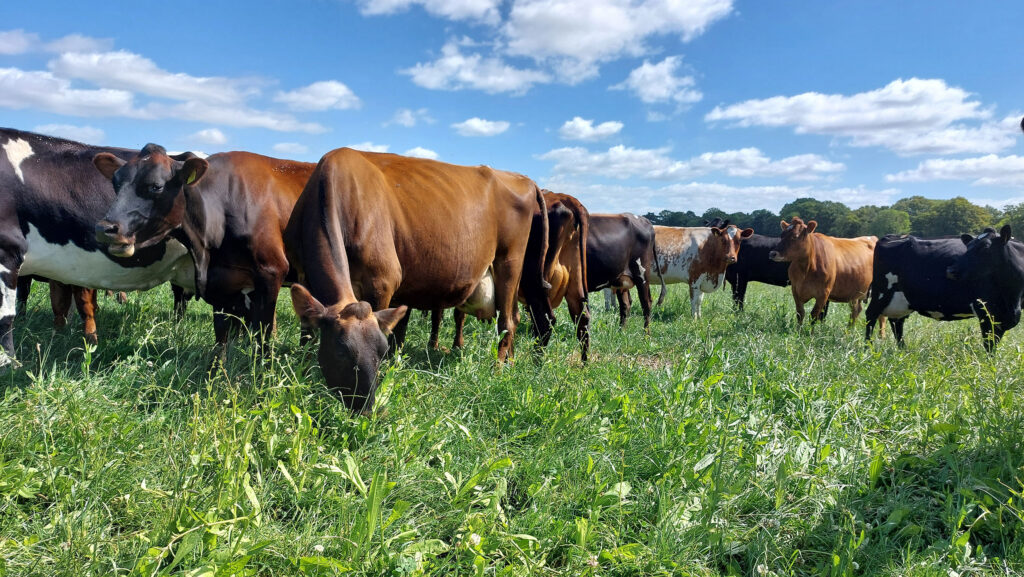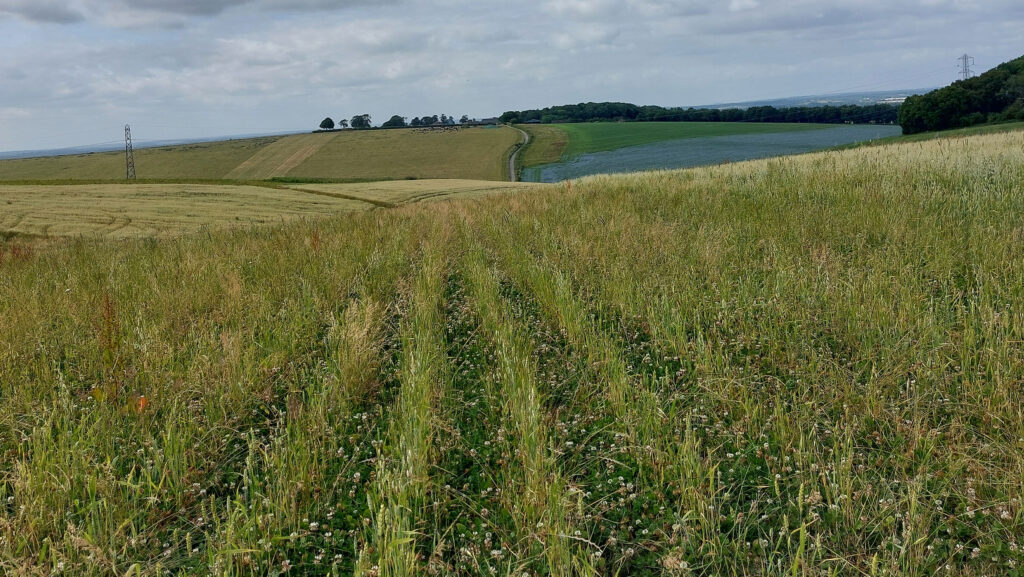How mobile milk production has improved cow health and profit
 © MAG/Shirley Macmillan
© MAG/Shirley Macmillan Oli Chedgey’s Roaming Dairy Company has demonstrated resilience by surviving the Beast from the East in 2018 and the drought of 2022.
Despite these challenges, his spring block-calving herd generated sufficient profit to repay his initial £460,000 loan (at 9% interest) after just four years.
See also: Share farming offers alternative structure with benefits
His landlord and share-farming partner, Tim May, is also reaping the benefits of grass and cows in building soil fertility.
They are now a pivotal part of the crop rotation on Tim’s organic 1,012ha (2,500-acre) Kingsclere Estate in Hampshire, where 405ha (1,000 acres) is now in herbal leys in a five-year rotation on soil types ranging from clay-loam over chalk to loam-chalk.
The partnership’s original 180 heifers has grown to a 450-cow crossbred herd, still milked once a day through a mobile parlour. Calving is in an eight-week block starting on 10 March, matching milk production to grass growth.
The cows graze a 202ha (500-acre) milking platform, says Oli. “We cut silage from half of it and pre- and post-mow, but give no hard feed. We allocate 6ha paddocks and move cows according to body condition score and the amount of grass in front of them,” he says.

Kingsclere Estate rotation © MAG/Shirley Macmillan
All stock are outwintered on a combination of hay and silage bales, with fodder beet for leaner animals.
Oli’s next challenge is how to get more out of this simple system, without introducing a second milking, going to 10-in-seven milkings, or feeding concentrates.
Milking begins at 6am (to benefit staff) and Oli is reluctant to change times, or increase milking frequency, to protect family time and his work-life balance.
To improve parlour throughput, he has installed cluster removers, meaning the team can now average 100 cows an hour, depending on stage of lactation.
He has also introduced milk recording to identify his most efficient cows to breed replacements from.
“We have a herd average of 3,500 litres at 5% fat and 3.87% protein, but there are cows giving 1,000 litres, so others must be producing more,” he explains.
Because all livestock are outwintered, and cows are more exposed to the weather, the lactation lasts 280 days. Oli is aiming to increase cow size from 500kg to 520kg to make a more robust cow for outwintering.
However, the herd is fertile and healthy: the 21-day submission rate is 98%, there is no lameness and little mastitis.
“In six years, I’ve not picked up a foot. Cows are not walking on concrete or stony tracks and we have given no antibiotics for foot-rot,” he says.
However, a cold night in May can lead to mastitis and there were three or four cases in the first six months of this year.
As cows are getting older, Oli is finding their immunity decreases, leading to a higher cell count. About 10% of the older animals are therefore teat sealed at drying off.
Although he stopped using the plate meter to measure grass, Oli thinks his next step in efficiency could be to use satellite tech.
He also wants to add solar panels to the parlour when the tech is available for moving them regularly.
Oli Chedgey was hosting delegates of the British Grassland Society Summer Meeting in July.
